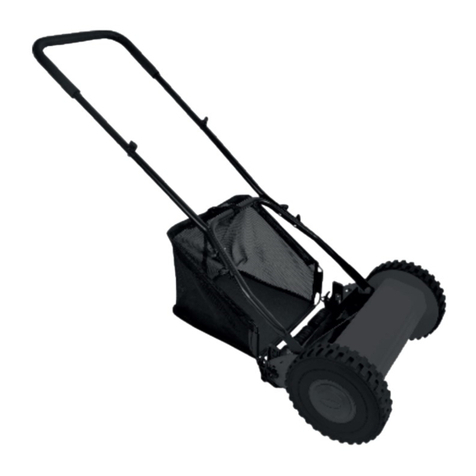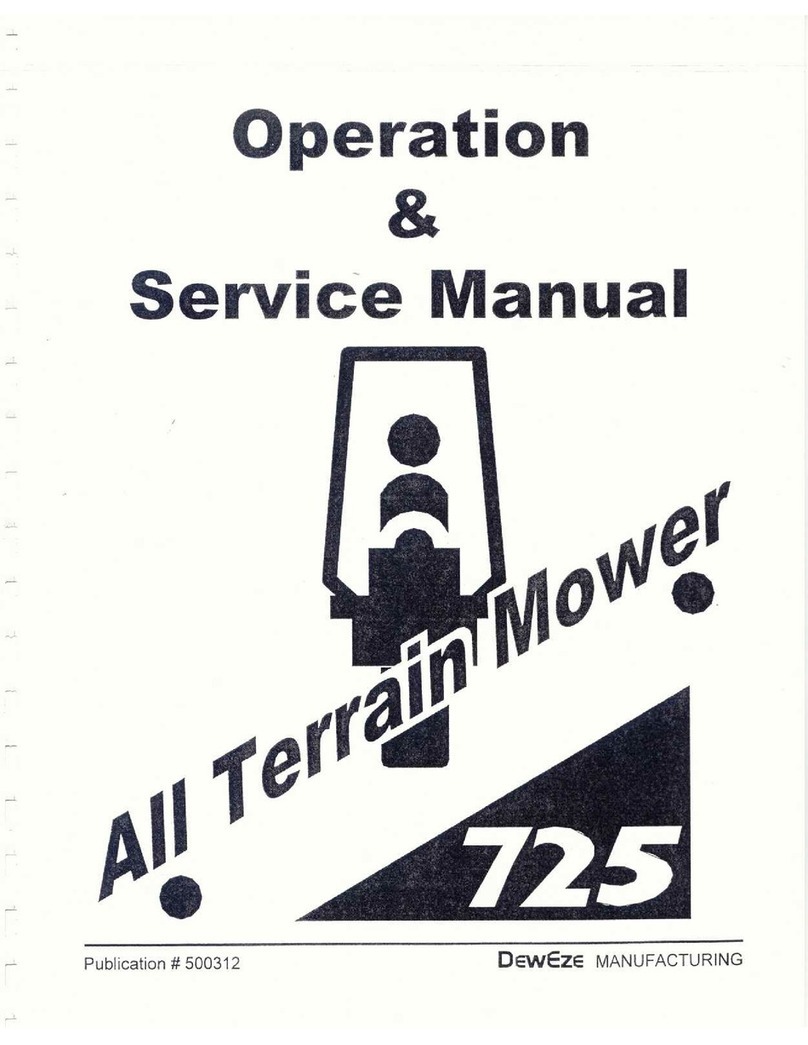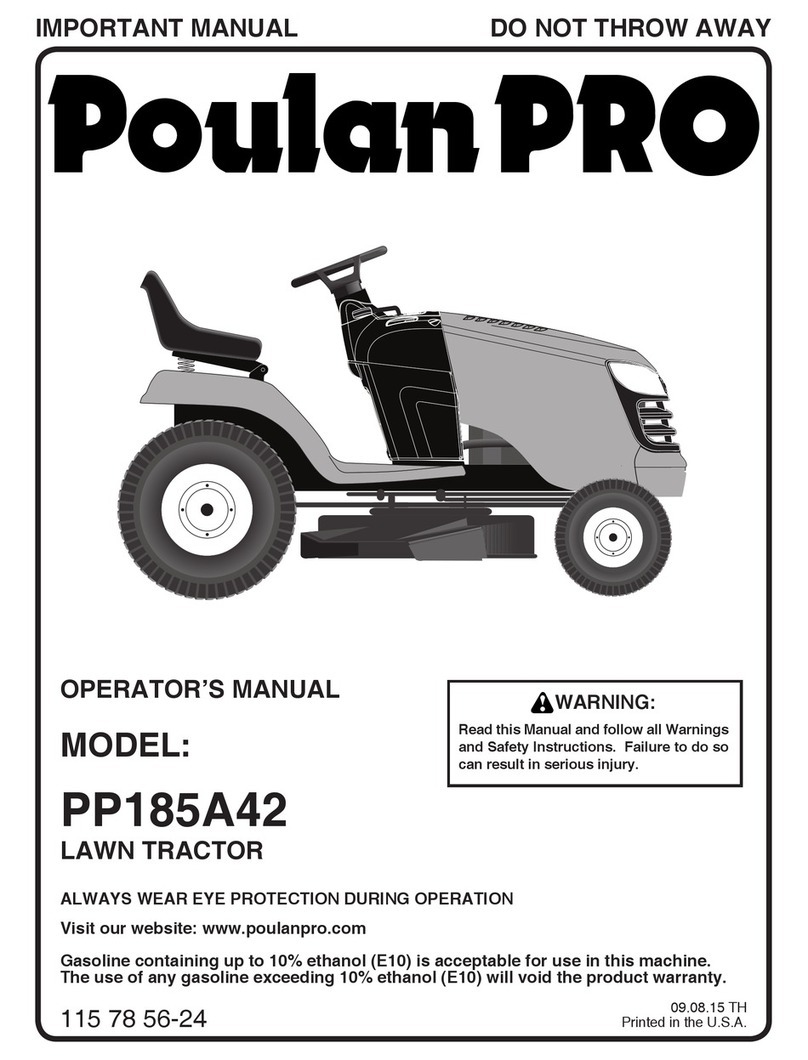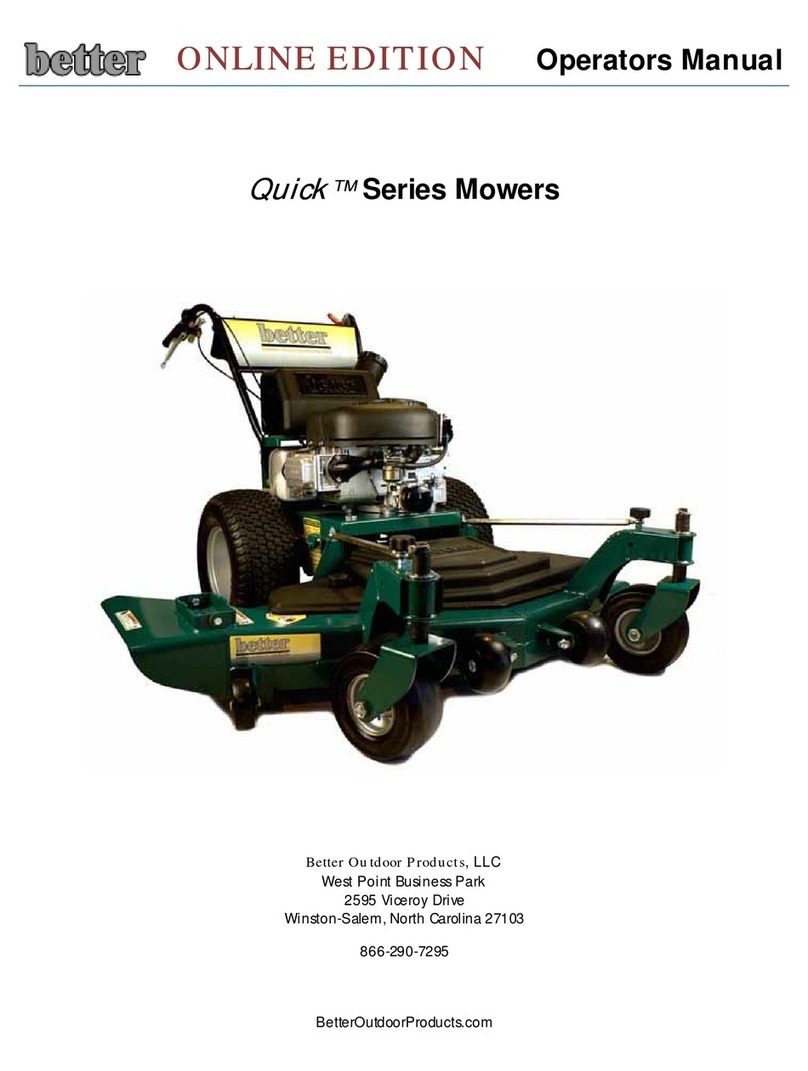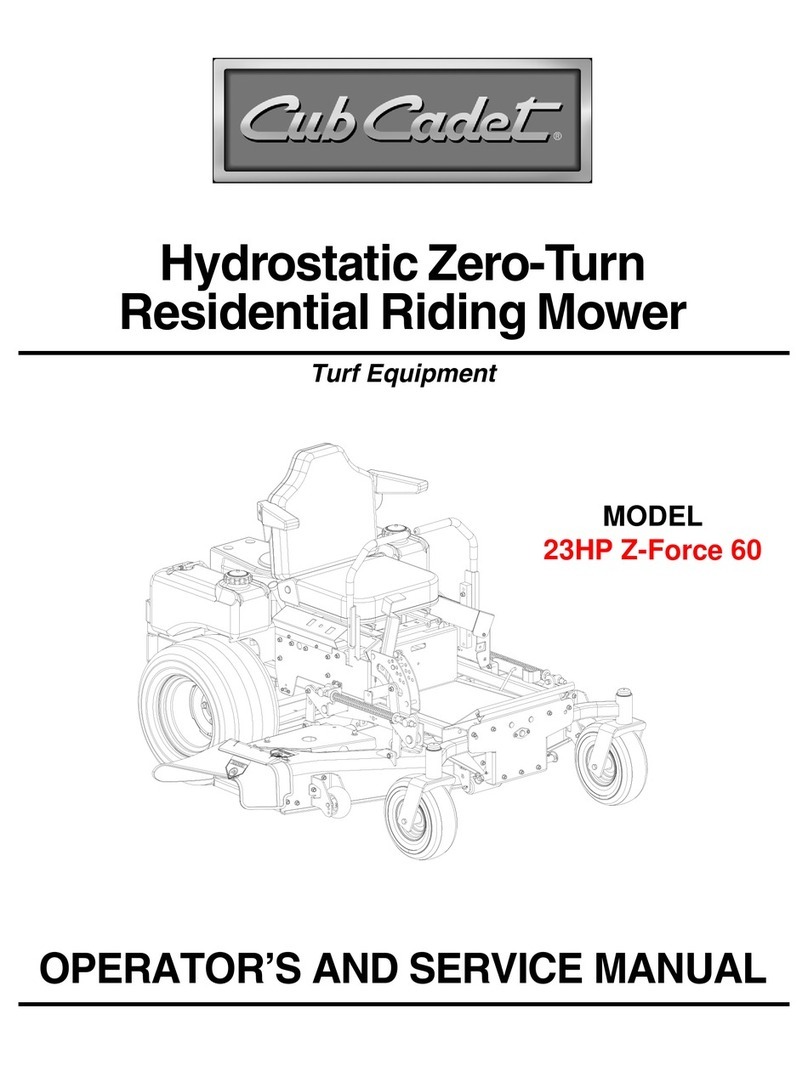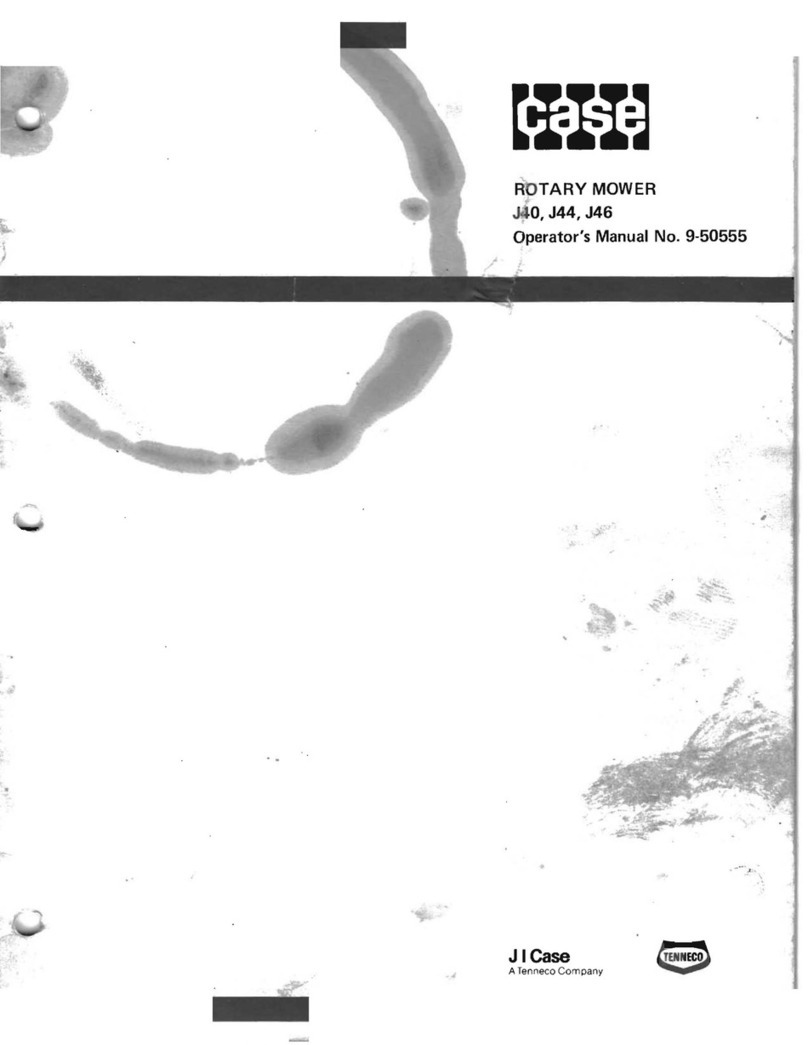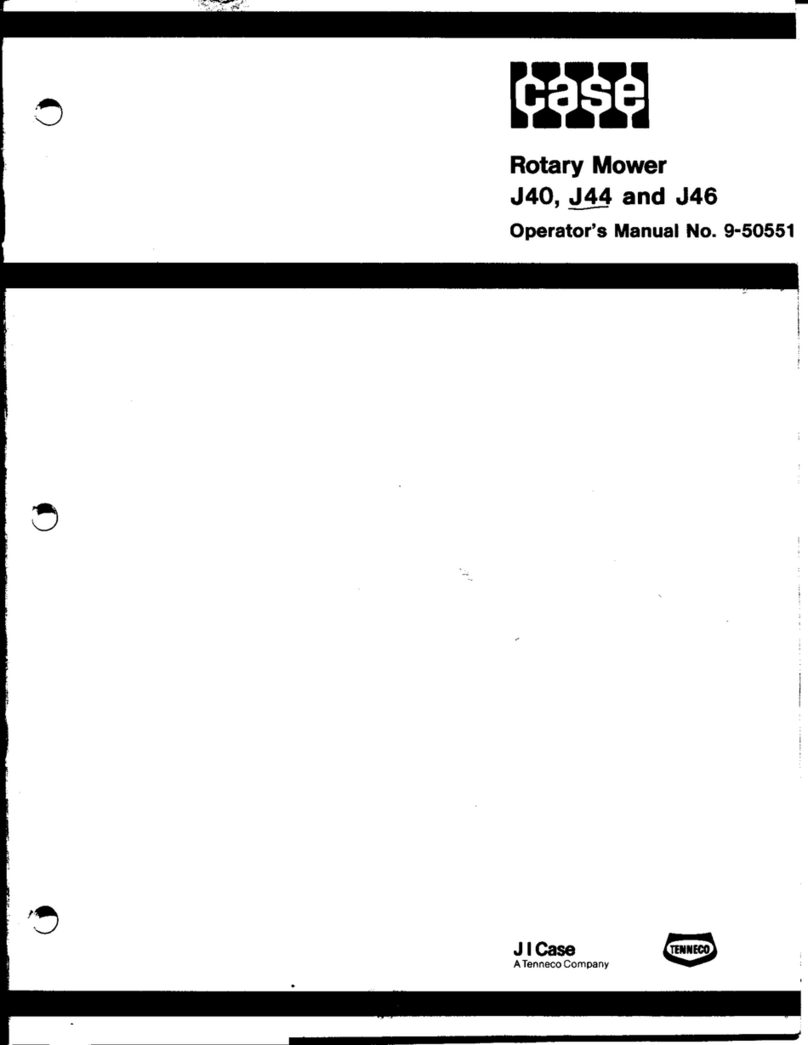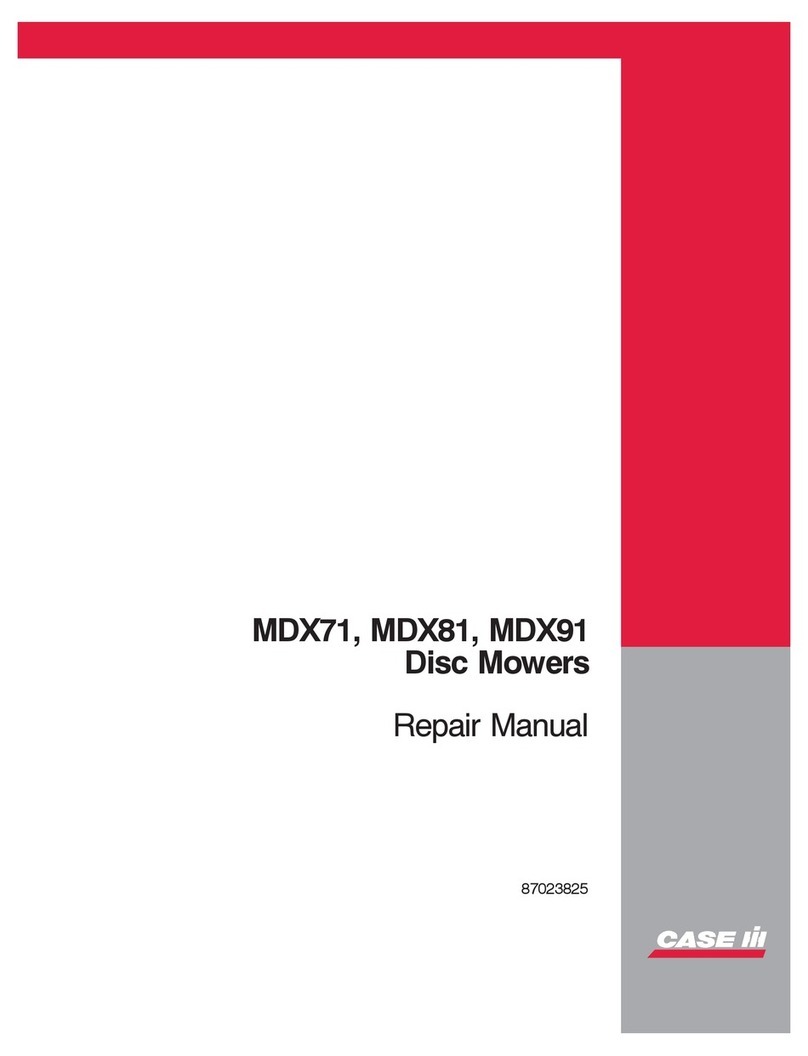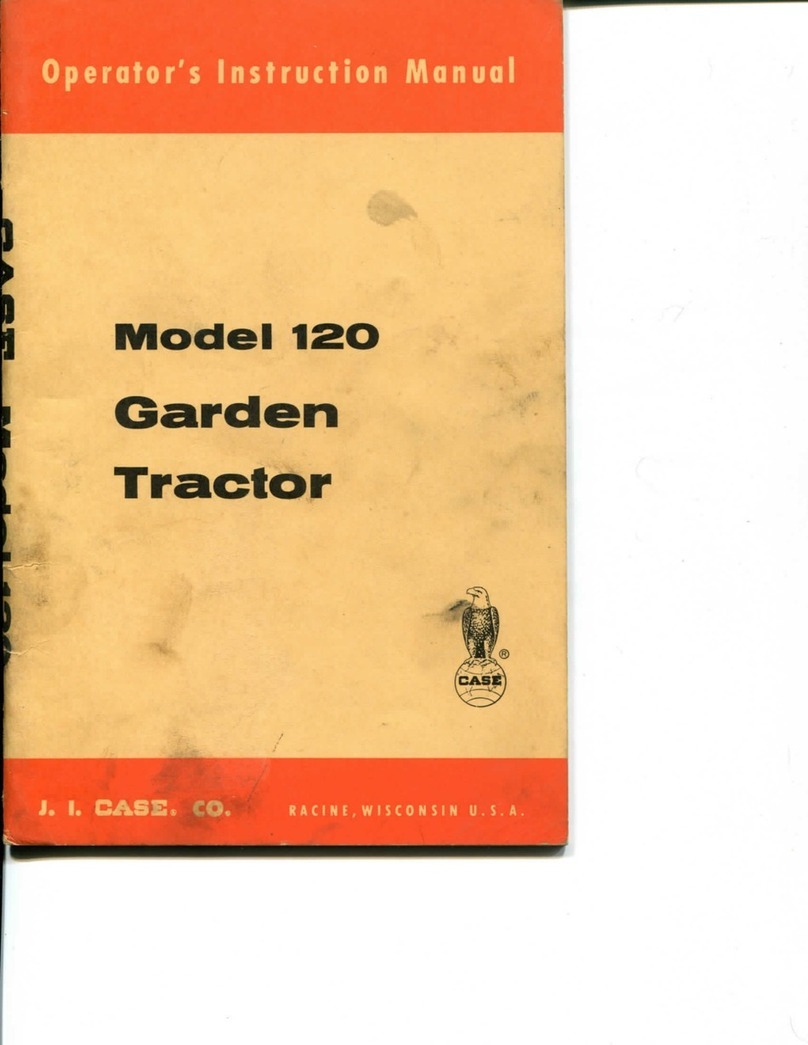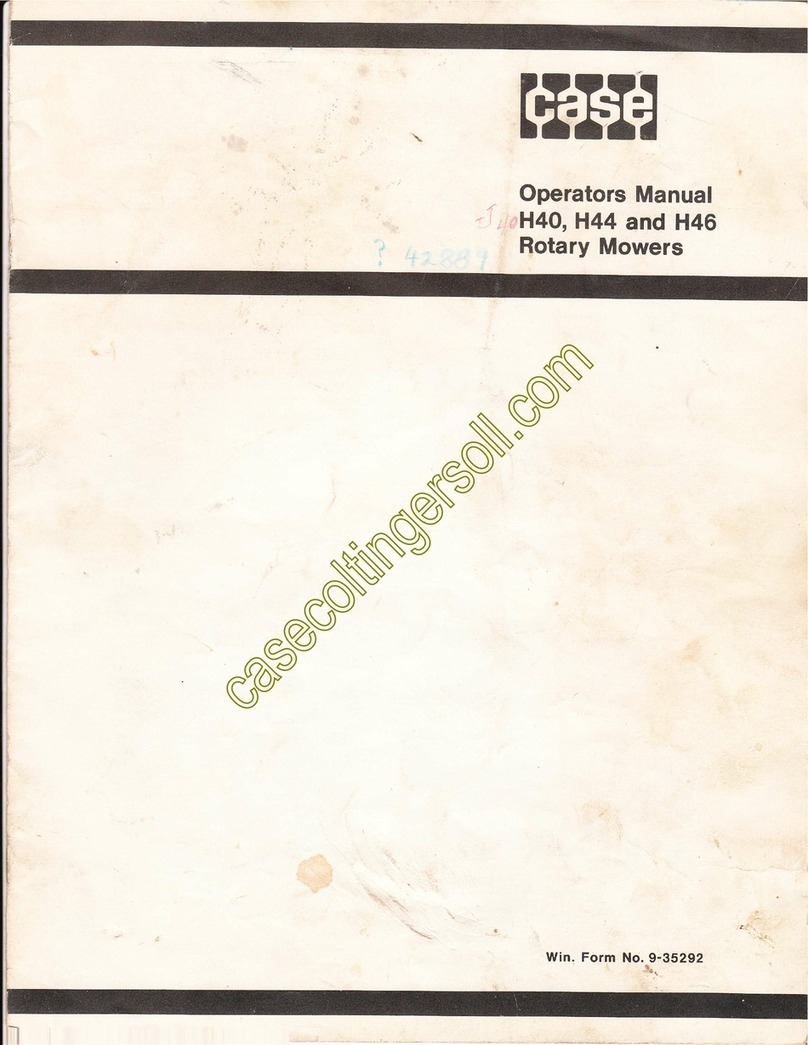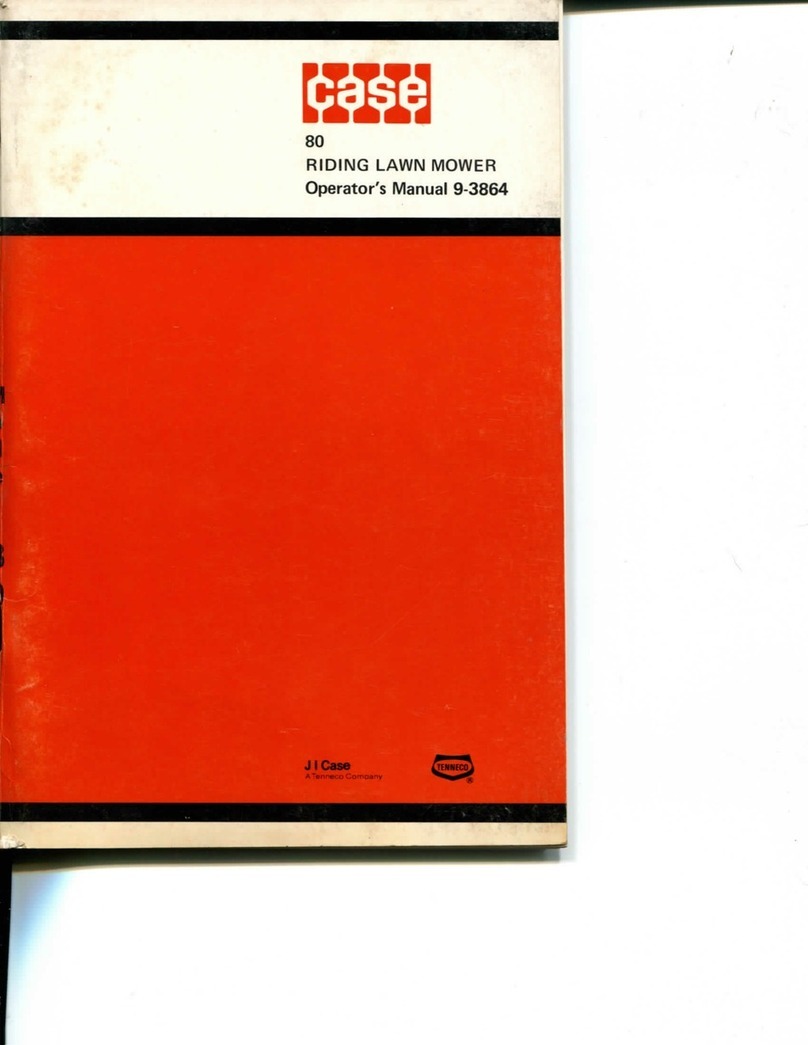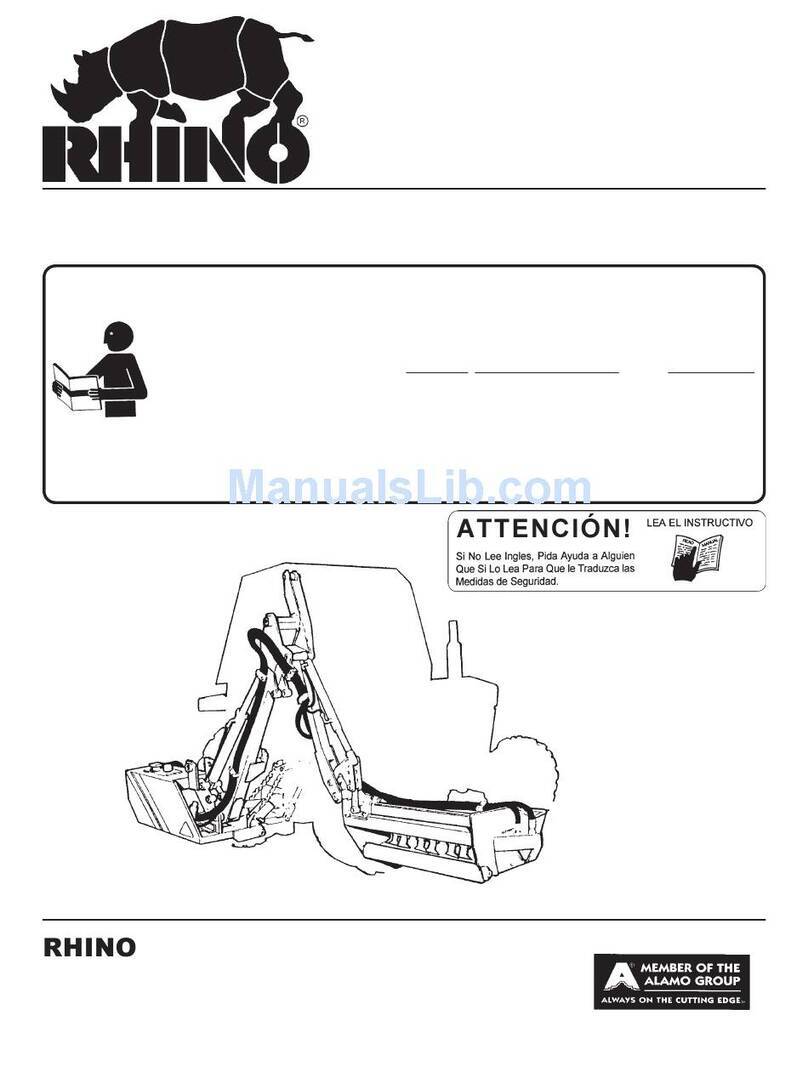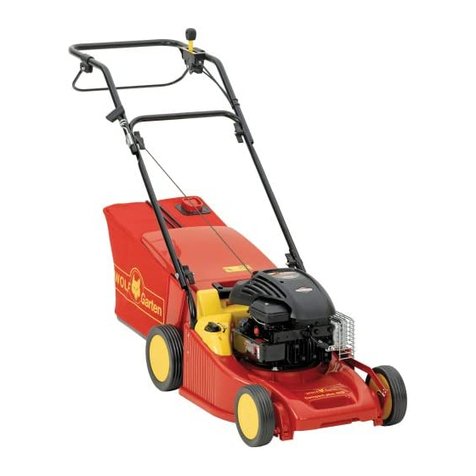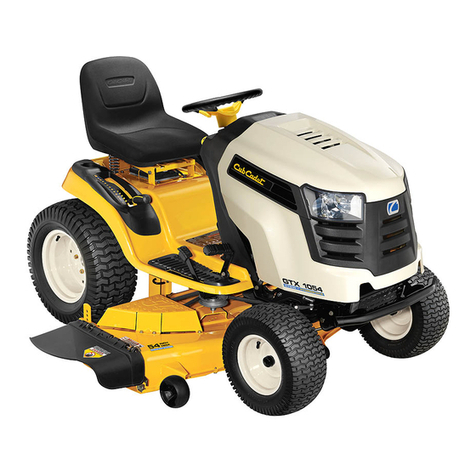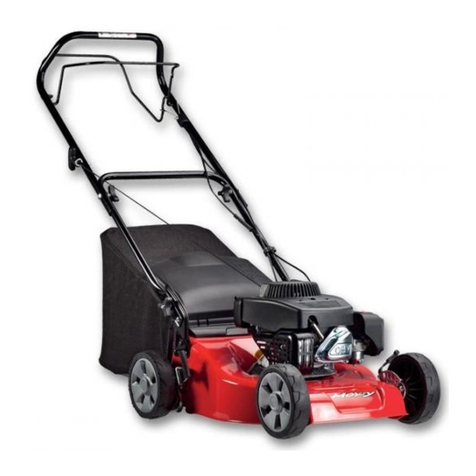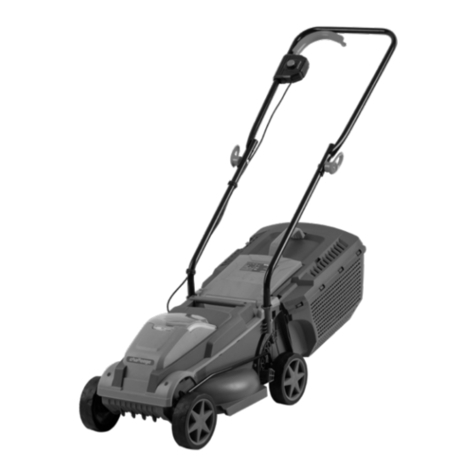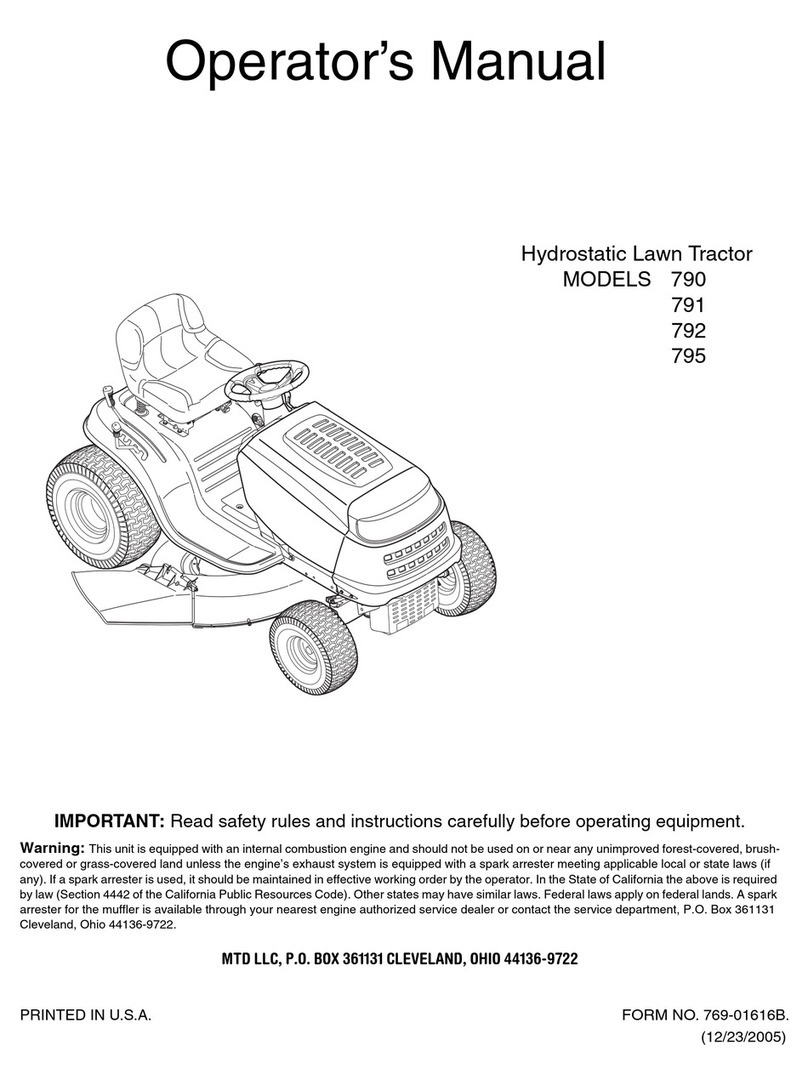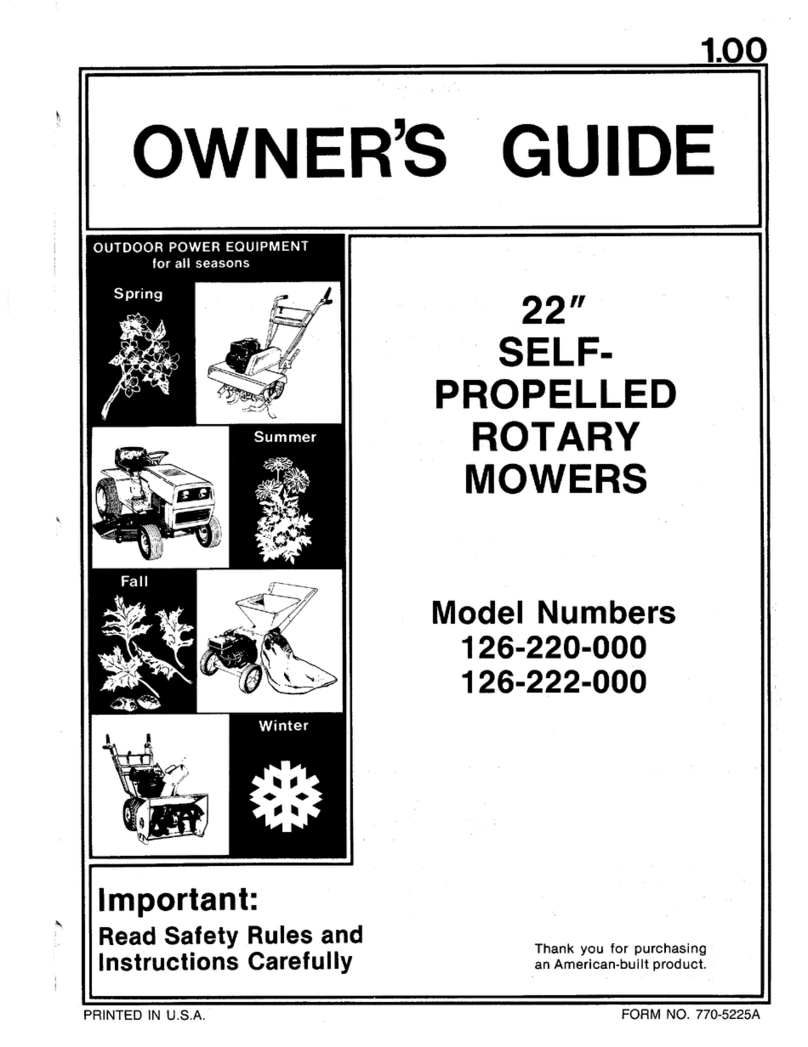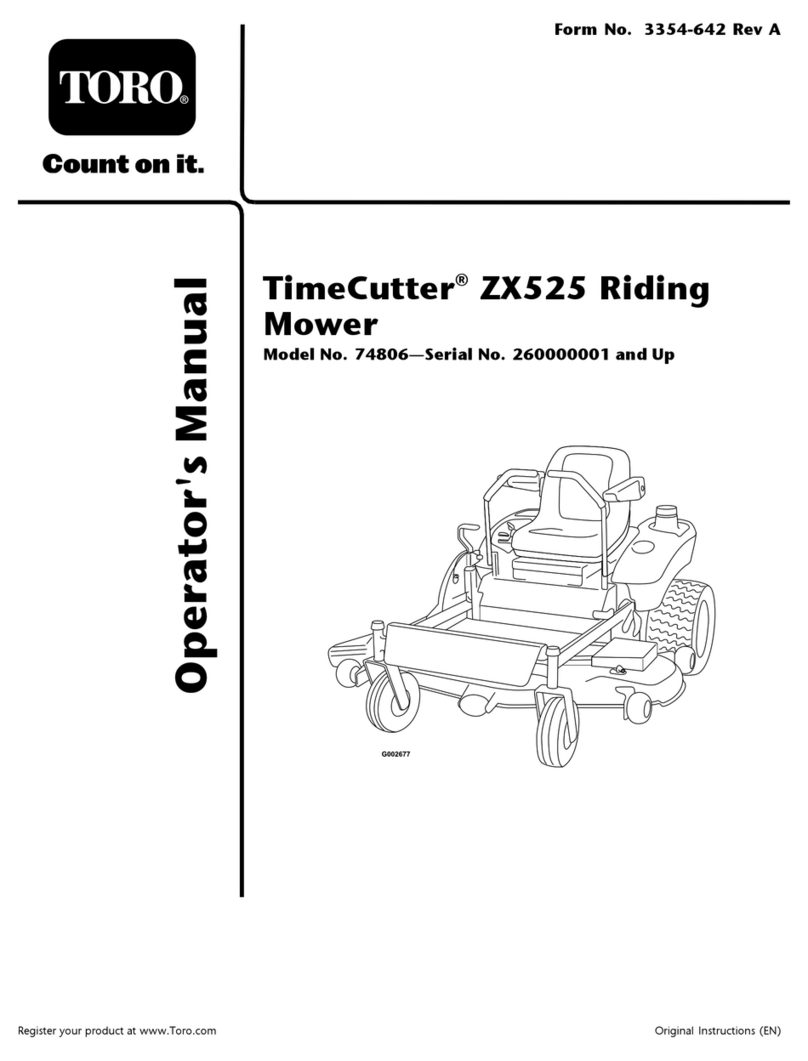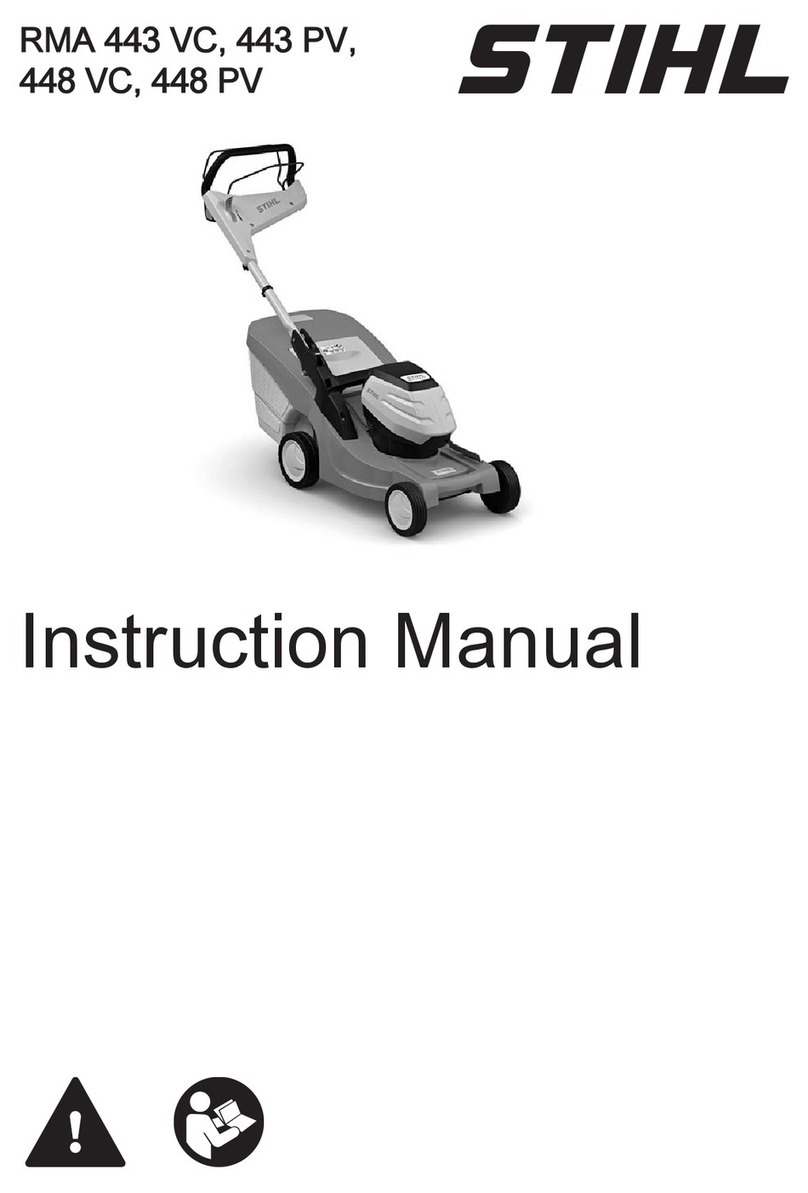
INTRODUCTION
This operator's manual
is
for
the Model K40, K44, and
Read
this manual before operating
your
rotary mower.
K46
rotary
mower. This operator's manual includes:
See
your
J I
Case
dealer
for
parts or repairs.
a.
Safety
Rules
b.
Installation Procedure
c.
Operating Procedure
d. Adjustments The words
"Right,
Left,
Front
and Rear"
as
used
in this
manual indicate directions when you
are
in the operator's
e.
Maintenance
seat
in the normal operating position.
ATTACHMENT
APPLICATION
CHART
MODEL
K40
G
K46
SIZE
TRACTOR
MODEL
(Beginning
with
P.I.N. 9646800 )
38"
(965 mm) 210, 220, 222, 442
44"
(1115 mm)
222,224,442,444,44~644,646,648
224,444,446,448,644,646,648
48"
(1220 mm)
B
ELT
A
PP
LICATION
CHART
*
TRACTOR
M
OD
EL
210 All
220 Before P.I.N. 9656747
220 P.I.N. 9656747 and after
222 Before P.I.N. 9658189
222 P.I.N. 9658189 and after
224
All
442
All
444 Before P.I.N. 9661261
444
P.I.N. 9661261 and after
446,448
All
644 Before P.I.
N.
9698343
644 P.I.N. 9698343 and after
646,648
All
" Belts included
with
your
tractor
.
BE
LT
PART
NU
MBER
C23358
C23807
C23358
C23807
C23358
C23358
C23809
C23809
C23359
C23359-t-
C23807
C23810
C23808
SPECIAL
INFORMATION
TRACTOR
MODEL
ALL
Lift
links
included
with
tractor.
INSTALLATION
01\1
TRACTORS
BEFORE PRODUCT
IDENTIFICATION
NUMBER 9646800
TRACTOR
MODEL
USE
KIT
220, 222 H-38
442,444
H-39
NOTE: Part numbers can change.
See
your
J I
Case
Dealer. - 7 -
